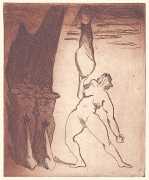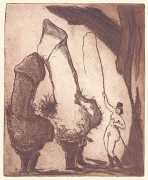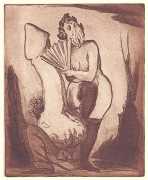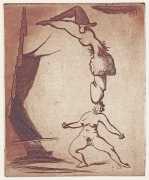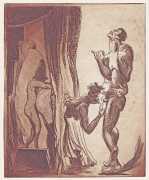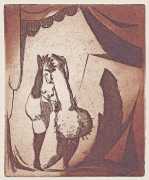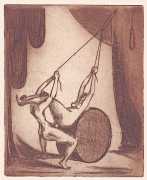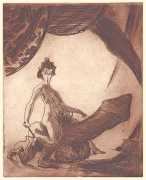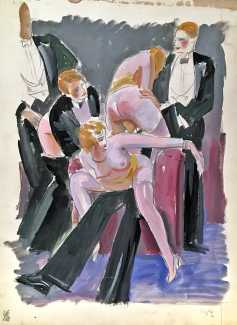
When the Zagreb Art Pavilion held a comprehensive retrospective exhibition of Uzelac’s work in 2008, the catalogue included this telling passage on his relationship with eroticism: ‘The vulgarity, obscenity and salacity that we find in many of his pictures, which are often similar to the kind of graffiti and drawings one finds in public toilets, are in no way an isolated topic in the oeuvre of Uzelac. Indeed, the erotic imagination is often present in his work, which in many cases enter the sphere of pure pornography, a theme which is found during the whole course of his career.’
As a student in Zagreb, Uzelac spent time in the libraries and art collections of Bela Čikoš Sesija and Milan Begović, men who were entirely familiar with the erotic portfolios of Achille Deveria, Franz von Bayros, Félicien Rops, Martin van Maele and Eugène Lepoittevin. Like some of them, he was fascinated by the opportunity to link the atmosphere and excitement of the circus ring with its sexually explicit potential. This portfolio of etchings (and they are almost the only etchings of his that are known, as he only used the medium between 1919 and 1921) demonstrates both his knowledge of historic erotic illustration and his skill in interpreting the theme in his own way.
What does Cirkus Eros tell us about the youthful Uzelac? Probably not very much beyond him exploring sexuality at a time when issues around gender, power and psychology were very much on the social and artistic agenda, and there was a new-found sense of freedom which made such exploration possible. As art historian Frano Dulibić has written, ‘these youthful drawings show a maturity, a variety of forms and compositions, and a strong imagination, which are the characteristics that distinguish Uzelac as one of the best Croatian artists of the twentieth century.’
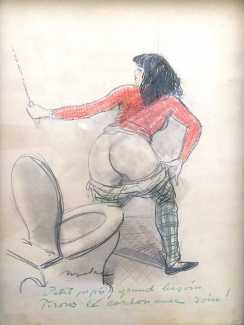
Uzelac’s knowledge of erotic art from earlier periods helped him to develop an exceptionally broad range of motifs, while his free imagination rooted in the spirit of the times and his draughtsmanship helped him to retain his own individuality, with each drawing reflecting his own temperament. Uzelac’s talent for erotic drawing was very important; it helped him earn his living in Prague and Zagreb, but especially after his move to Paris. It was not until after Uzelac’s death that the definitive link was made between much of his overtly erotic work and his mainstream output, because much of it was produced for private collectors, and was unsigned.
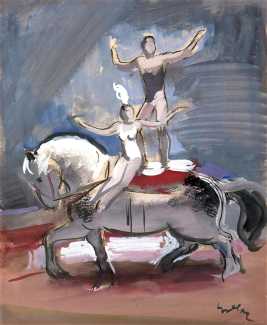
If the erotic underworld of Paris was an important inspiration for Uzelac, the circus also maintained its fascination for him – like many artists of the period he was fascinated by the opportunity to capture the atmosphere and excitement of the circus ring, and made a number of colourful paintings of horses, acrobats and trapeze artists.
We are very grateful to Hans-Jürgen Döpp for these images; Hans-Jürgen, the compiler of many books on erotic art, curates the Venusberg online gallery and bookshop which you can find here.


